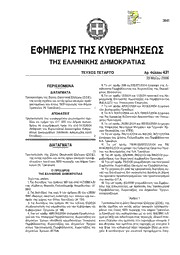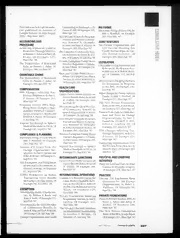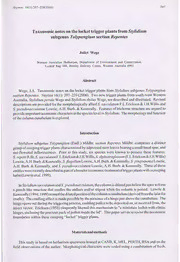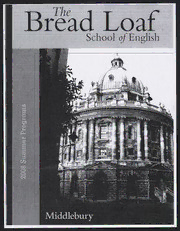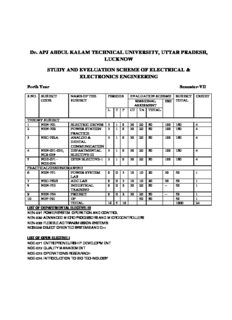
Dr. APJ ABDUL KALAM TECHNICAL UNIVERSITY, UTTAR PRADESH, LUCKNOW STUDY AND ... PDF
Preview Dr. APJ ABDUL KALAM TECHNICAL UNIVERSITY, UTTAR PRADESH, LUCKNOW STUDY AND ...
Dr. APJ ABDUL KALAM TECHNICAL UNIVERSITY, UTTAR PRADESH, LUCKNOW STUDY AND EVELUATION SCHEME OF ELECTRICAL & ELECTRONICS ENGINEERING Forth Year Semester-VII S.NO. SUBJECT NAME OF THE PERIODS EVALUATION SCHEME SUBJECT CREDIT CODE SUBJECT SESSIONAL ESE TOTAL ASSESMENT L T P CT TA TOTAL THEORY SUBJECT 1 NEN-701 ELECTRIC DRIVES 3 1 0 30 20 50 100 150 4 2 NEN-702 POWER STATION 3 1 0 30 20 50 100 150 4 PRACTICE 3 NEC-702A ANALOG & 3 1 0 30 20 50 100 150 4 DIGITAL COMMUNICATION 4 NEN-031-033, DEPARTMENTAL 3 1 0 30 20 50 100 150 4 NCS-039 ELECTIVE-III 5 NOE-071 - OPEN ELECTIVE-1 3 1 0 30 20 50 100 150 4 NOE-074 PRACTICAL/DESIGN/DRAWING 6 NEN-751 POWER SYSTEM 0 0 3 10 10 20 30 50 1 LAB 7 NEC-752B ADC LAB 0 0 3 10 10 20 30 50 1 8 NEN-753 INDUSTRIAL 0 0 2 30 20 50 -- 50 1 TRAINING 9 NEN-754 PROJECT 0 0 2 30 20 50 -- 50 1 10 NGP-701 GP 50 50 50 1 TOTAL 16 5 10 1000 24 LIST OF DEPARTMENTAL ELECTIVE-III NEN-031 POWER SYSTEM OPERATION AND CONTROL NEN-032 ADVANCED MICROPROCESSORS AND MICROCONTROLLERS NEN-033 FLEXIBLE AC TRANSMISSION SYSTEMS NCS-039 OBJECT ORIENTED SYSTEMS AND C++ LIST OF OPEN ELECTIVE-I NOE-071 ENTREPRENEURSHIP DEVELOPMENT NOE-072 QUALITY MANAGEMENT NOE-073 OPERATIONS RESEARACH NOE-074 INTRODUCTION TO BIO TECHNOLOGY PROPOSED STUDY AND EVELUATION SCHEME OF ELECTRICAL & ELECTRONICS ENGINEERING Forth Year Semester-VIII S. SUBJECT NAME OF THE PERIODS EVALUATION SCHEME SUBJECT CREDIT NO. CODE SUBJECT TOTAL SESSIONAL ESE ASSESMENT L T P CT TA TOTAL THEORY SUBJECT 1 NEE-801 ELECTRICAL & 3 1 0 30 20 50 100 150 3 ELECTRONICS ENGINEERING MATERIALS 2 NEC-802 EMBEDDED 3 1 0 30 20 50 100 150 4 SYSTEM 3 NEE-041 - DEPARTMENTAL 3 1 0 30 20 50 100 150 4 NEE-042; NEN- ELECTIVE-IV 043 - NEN-044 4 NOE-081 - OPEN ELECTIVE- 3 1 0 30 20 50 100 150 4 NOE-084 2 PRACTICAL/DESIGN/DRAWING 5 NEE-851 PROJECT 0 0 12 0 100 100 250 350 8 6 NGP-801 GP 50 50 50 1 TOTAL 14 5 12 180 350 650 1000 24 LIST OF DEPARTMENTAL ELECTIVE IV NEE-041 EHVAC&DC TRANSMISSION NEE-042 POWER QUALITY NEN-043 IMAGE PROCESSING NEN-044 SATELLITE COMMUNICATION LIST OF OPEN ELECTIVE 2 NOE-081 NON-CONVENTIONAL ENERGY RESOURCES NOE-082 NON LINEAR DYNAMIC SYSTEMS NOE-083 DATABASE MANAGEMENT SYSTEM AND DATA MINING AND WAREHOUSING NOE-084 AUTOMATION & ROBOTICS NEE701/NEN 701: Electric Drives L T P 3 1 0 UNIT-I: Fundamentals of Electric Drive: Electric Drives and its parts, advantages of electric drives Classification of electric drives Speed-torque conventions and multi-quadrant operations Constant torque and constant power operation Types of load Load torque: components, nature and classification UNIT-II: Dynamics of Electric Drive: Dynamics of motor-load combination Steady state stability of Electric Drive Transient stability of electric Drive Selection of Motor Power rating: Thermal model of motor for heating and cooling, classes of motor duty, determination of motor power rating for continuous duty, short time duty and intermittent duty. Load equalization UNIT-III: Electric Braking: Purpose and types of electric braking, braking of DC, three phase induction and synchronous motors Dynamics During Starting and Braking: Calculation of acceleration time and energy loss during starting of DC shunt and three phase induction motors, methods of reducing energy loss during starting. Energy relations during braking, dynamics during braking UNIT-IV: Power Electronic Control of DC Drives: Single phase and three phase controlled converter fed separately excited DC motor drives (continuous conduction only), dual converter fed separately excited DC motor drive, rectifier control of DC series motor. Supply harmonics, power factor and ripples in motor current Chopper control of separately excited DC motor and DC series motor. UNIT-V: Power Electronic Control of AC Drives: Three Phase induction Motor Drive: Static Voltage control scheme, static frequency control scheme (VSI, CSI, and cyclo – converter based) static rotor resistance and slip power recovery control schemes. Three Phase Synchronous motor: Self controlled scheme Special Drives: Switched Reluctance motor, Brushless dc motor. Selection of motor for particular applications Text Books: 1. G.K. Dubey, “Fundamentals of Electric Drives”, Narosa publishing House. 2. S.K. Pillai, “A First Course on Electric Drives”, New Age International. 3. B.N. Sarkar, “Fundamental of Industrial Drives”, Prentice Hall of India Ltd. Reference Books: 1 M. Chilkin, “Electric Drives”,Mir Publishers, Moscow. 2 Mohammed A. El-Sharkawi, “Fundamentals of Electric Drives”, Thomson Asia, Pvt. Ltd. Singapore. 3 N.K. De and Prashant K. Sen, “Electric Drives”, Prentice Hall of India Ltd. 4 V. Subrahmanyam, “Electric Drives: Concepts and Applications”, TataMcGraw Hill. NEE 702/NEN702: POWER STATION PRACTICE L T P 3 1 0 UNIT-I:Introduction: Electric energy demand and growth in India, electric energy sources. Thermal Power Plant: Site selection, general layout and operation of plant, detailed description and use of different parts. Hydro Electric Plants: Classifications, location and site selection, detailed description of various components, general layout and operation of Plants, brief description of impulse, reaction, Kaplan and Francis turbines, advantages & disadvantages, hydro-potential in India UNIT-II: Nuclear Power Plant: Location, site selection, general layout and operation of plant. Brief description of different types of reactors Moderator material, fissile materials, control of nuclear reactors, disposal of nuclear waste material, shielding. Gas Turbine Plant: Operational principle of gas turbine plant & its efficiency, fuels, open and closed-cycle plants, regeneration, inter-cooling and reheating, role and applications. Diesel Plants: Diesel plant layout, components & their functions, its performance, role and applications UNIT-III: Sub-stations Layout: Types of substations, bus-bar arrangements, typical layout of substation. Power Plant Economics and Tariffs: Load curve, load duration curve, different factors related to plants and consumers, Cost of electrical energy, depreciation, generation cost, effect of Load factor on unit cost. Fixed and operating cost of different plants, role of load diversity in power system economy. Objectives and forms of Tariff; Causes and effects of low power factor, advantages of power factor improvement, different methods for power factor improvements. UNIT-IV: Economic Operation of Power Systems: Characteristics of steam and hydro-plants, Constraints in operation, Economic load scheduling of thermal plants Neglecting and considering transmission Losses, Penalty factor, loss coefficients, Incremental transmission loss. Hydrothermal Scheduling UNIT-V:Non Conventional Energy Sources: Power Crisis, future energy demand, role of Private sectors in energy management, concepts & principals of MHD generation, Solar power plant, Wind Energy, Geothermal Energy, Tidal energy, Ocean Thermal Energy. Text Books: 1. B.R. Gupta, “Generation of Electrical Energy”, S. Chand Publication. 2. Soni, Gupta & Bhatnagar, “A text book on Power System Engg.”, Dhanpat Rai & Co. 3. P.S.R. Murthy, “Operation and control of Power System” BS Publications, Hyderabad. Reference Books: 4. W. D. Stevenson, “Elements of Power System Analysis”, McGraw Hill. 5. S. L. Uppal, “Electrical Power”, Khanna Publishers. NEC702A: Analog & Digital Communication L T P 3 1 0 UNIT I: Elements of communication system and its limitations Amplitude Modulation: Amplitude modulation and detection, Generation and detection of DSB-SC, SSB and vestigial side band modulation, carrier acquisition AM transmitters and receivers, super hetrodyne receiver, IF amplifiers, AGC circuits Frequency Division multiplexing UNIT II: Angle Modulation: Basic definitions Narrow band and wideband frequency modulation, transmission bandwidth of FM signals Generation and detection of frequency modulation Noise: External noise, internal noise Noise calculations, signal to noise ratio Noise in AM and FM systems UNIT III: Pulse Modulation: Introduction, sampling process Analog Pulse Modulation Systems-Pulse Amplitude Modulation, Pulse width modulation and Pulse Position Modulation. Waveform coding Techniques: Discretization in time and amplitude, Quantization process, quantization noise, Pulse code Modulation, Differential Pulse code Modulation, Delta Modulation and Adaptive Delta Modulation. UNIT IV: Digital Modulation Techniques: Types of digital modulation, waveforms for amplitude, frequency and phase shift keying, methods of generation of coherent and noncoherent, ASK,FSK and PSK, comparison of above digital techniques. UNIT V: Time Division Multiplexing: Fundamentals, Electronic Commutator, Bit/byte interleaving, TI carrier system, synchronization and signaling of TI, TDM and PCM hierarchy, synchronization techniques Introduction to Information Theory: Measure of information, Entropy & Information rate, channel capacity, Hartley Shannan law, Huffman coding, shannan Fano coding. Text Books: 1. Simon Haykin,“ Communication Systems” John Wiley & Sons 4th Edition 2. G.Kennedy and B. Davis,” Electronic Communication Systems” 4th Edition, Tata McGraw Hill 3. Simon Haykin, “Digital Communications” John Wiley & Sons 4. T.L. Singal, “Analog & Digital Communication”, Tata Mc Graw Hill Reference Books: 1. B.P. Lathi, “Modern Analog & Digital Communication Systems” Oxford University Press. 2. Taub & Schilling, “Communication System: Analog and Digital” Tata Mc Graw Hill 3. R.P. Singh & S.D. Sapre, “Communication Systems Analog and Digital” Tata McGraw Hill. NEE –031/NEN-031: POWER SYSTEM OPERATION AND CONTROL L T P 3 1 0 UNIT-I: Introduction: Structure of power systems, Power system control center and real time computer control, SCADA system Level decomposition in power system Power system security Various operational stages of power system Power system voltage stability UNIT-II: Economic Operation: Concept and problems of unit commitment Input-output characteristics of thermal and hydro-plants System constraints Optimal operation of thermal units without and with transmission losses, Penalty factor, incremental transmission loss, transmission loss formula (without derivation) Hydrothermal scheduling long and short terms Concept of optimal power flow UNIT-III: Load Frequency Control: Concept of load frequency control, Load frequency control of single area system: Turbine speed governing system and modeling, block diagram representation of single area system, steady state analysis, dynamic response, control area concept, P-I control, load frequency control and economic dispatch control. Load frequency control of two area system: Tie line power modeling, block diagram representation of two area system, static and dynamic response UNIT-IV: Automatic Voltage Control: Schematic diagram and block diagram representation, different types of Excitation systems & their controllers. Voltage and Reactive Power control: Concept of voltage control, methods of voltage control- control by tap changing transformer. Shunt Compensation, series compensation, phase angle compensation UNIT-V State Estimation:Detection and identification, Linear and non-linear models. Flexible AC Transmission Systems: Concept and objectives FACTs controllers: Structures & Characteristics of following FACTs Controllers. TCR,FC-TCR, TSC, SVC, STATCOM, TSSC, TCSC, SSSC, TC-PAR, UPFC Text Books: 1. D.P. Kothari & I.J. Nagrath, “Modern Power System Analysis” Tata Mc Graw Hill, 3rd Edition. 2. P.S.R. Murty, “Operation and control in Power Systems” B.S. Publications. 3. N. G. Hingorani & L. Gyugyi, “ Understanding FACTs” Concepts and Technology of Flexible AC Transmission Systems” 4. A. J. Wood & B.F. Wollenburg, “ Power Generation, Operation and Control “ John Wiley & Sons. Reference Books: 1. O.I. Elgerd, “Electric Energy System Theory” Tata McGraw Hill. 2. P. Kundur, “ Power System Stability and Control Mc Graw Hill. 3. T. K. Nagsarkar & M.S. Sukhiza,’ Power System Analysis’ Oxford University Press. NEE-032/NEN032: ADVANCED MICROPROCESSORS AND MICROCONTROLLERS L T P 3 1 0 Unit-I: Mode of operation of higher order processors: Real mode and protected mode Real mode and protected mode memory addressing, access right byte, Memory paging, System descriptors, Multi Tasking & TSS. Unit-II: Instruction Set of higher order processors(8086 to Pentium): Comparison with 8086 in real mode: Generalized instruction set format Addressing Mode: DRAM & BRAM Categorization of instruction set of INTEL processors. Integer instructions: Data transfer instructions, arithmetic and logical operations, string instructions, branch control instructions, procedure call instruction and return instruction. Unit-III: Processing of CALLS, INTERRUPTS & EXCEPTIONS: Privilege levels; ENTER and LEAVE Instructions, INT N. IRET. Interrupt processing sequence, Protected mode interrupts. Unit-IV: Assembly Level Programming: ROM BIOS Routines, MS DOS BIOS Routines, Assembling a progam using Assembler, exe and. com programs. Mixed Language Programming: using Assembly with C/C ++ Unit-V Microcontrollers: Introduction, basic functions, applications of 8-bit and 16-bit microcontrollers. 8-bit microcontrollers INTEL 8051: Internal Architecture, signals, memory organization and interfacing,Timing and control, port operations, interrupts and I/O addressing. Instruction Set and programming. 16-bit microcontrollers INTEL 8096: Architectural description, memory Organization and interfacing, I/O addressing, Interrupts, instruction set and programming. Text Books: 1. Ray, A.K. & Burchandi, K.m., “Advanced Microprocessors and Peripherals: Architeacture, Programming and Interfacing” Tata Mc.Graw Hill. 2. Renu Sing & B.P.Singh, “Advanced Microprocessors and Microcontrollers” New Age International. 3. Krishna Kant,”Microprocessors and Microcontrollers” PHI Learning. 4. Brey, Barry B. “The INTEL Microprocessors” Pearson Education. Reference Books: 1. Ayala, “The 8051 Micro Controller”, Centage Learning. 2. Mazidi M.A., Maizidi J.G. Mckinlay R.D., “The 8051 Microcontroller and Embedded Systems” Pearson Education. 3. Rajkamal, “The concept and feature of microcontrollers 68HC11, 8051 and 8096”, S.Chand Publisher, New Delhi 4. Peatman John, “Design with microcontroller”, Mc.-Graw Hill Publishing. NEE033/NEN-033: FLEXIBLE AC TRANSMISSION SYSTEMS UNIT I: Introduction: Reactive power control in electrical power transmission lines - Uncompensated transmission line – series compensation – Basic concepts of Static Var Compensator (SVC) – Thyristor Controlled Series capacitor (TCSC) – Unified power flow controller (UPFC). UNIT II: Static Var Compensator (SVC) And Applications Voltage control by SVC – Advantages of slope in dynamic characteristics – Influence of SVC on system voltage – Design of SVC voltage regulator –Modelling of SVC for power flow and fast transient stability – Applications: Enhancement of transient stability – Steady state power transfer Enhancement of power system damping. UNIT III: Thyristor Controlled Series Capacitor (TCSC) And Applications Operation of the TCSC – Different modes of operation – Modelling of TCSC – Variable reactance model – Modelling for Power Flow and stability studies. Applications: Improvement of the system stability limit – Enhancement of system damping. UNIT IV: Voltage Source Converter Based Facts Controllers Static Synchronous Compensator (STATCOM) – Principle of operation – V-I Characteristics. Applications: Steady state power transfer-enhancement of transient stability – prevention of voltage instability. SSSC-operation of SSSC and the control of power flow – modelling of SSSC in load flow and transient stability studies. TEXT BOOKS: 1. R.Mohan Mathur, Rajiv K.Varma, “Thyristor – Based Facts Controllers for Electrical Transmission Systems”, IEEE press and John Wiley & Sons, Inc, 2002. 2. Narain G. Hingorani, “Understanding FACTS -Concepts and Technology of Flexible AC Transmission Systems”, Standard Publishers Distributors, Delhi- 110 006, 2011. 3. K.R.Padiyar,” FACTS Controllers in Power Transmission and Distribution”, New Age International(P) Limited, Publishers, New Delhi, 2008. REFERENCES: 1. A.T. John, “Flexible A.C. Transmission Systems”, Institution of Electrical and Electronic Engineers (IEEE) 1999. 2. V.K. Sood, HVDC and FACTS controllers – Applications of Static Converters in Power System, APRIL 2004 , Kluwer Academic Publishers, 2004. 3. Xiao – Ping Zang, Christian Rehtanz and Bikash Pal, “Flexible AC Transmission System: Modelling and Control” Springer, 2012. NCS – 039: OBJECT ORIENTED SYSTEMS AND C++ L T P 3 1 0 Unit-I Object & classes, Links and Associations, Generalization and Inheritance, Aggregation, Abstract classes, Generalization, Multiple Inheritance, Meta data. Unit-II Events and States, Operations and Methods, Nested state diagrams, Concurrency, Relation of Object and Dynamic Models. Unit-III Functional Models, Data flow diagrams, Specifying Operations, Constraints, OMT Methodologies, examples and case studies to demonstrate methodology Unit-IV Principles of object oriented programming, Tokens, Expressions, classes, Functions, Constructors, Destructors, Functions overloading, Operator Overloading, I/O Operations. Real life applications, Inheritance Extended Classes, Pointer. Virtual functions, Polymorphisms, Working with files, Class templates, Function templates, Exception handling, String manipulation. Translating object oriented design into implementations. Unit-V: Introduction to Unix/Linux operating systems. Concept of file system, handling ordinary files, concept of shell, vi editor, Basic ile attributes, concept of process, Basic system administration. Text Books: 1. Rambaugh James etal, "Object Oriented Design and Modeling",PHI-1997 2. Balagurusamy E," Object Oriented Programming with C++", TMH,2001 ' 3. Sumitabha Das “Unix concepts & application” TMH Reference Books: 1. Dillon and Lee, "Object Oriented Conceptual Modeling", New Delhi PHI-1993 2. Lipman, Stanley B, Jonsce Lajoie, C++ Primer Reading", AWL, 1999 3. Stephen R. Shah, "Introduction to Object Oriented Analysis and Design", TMH 4. Berzin Joseph, "Data Abstraction: the object oriented approach using C++", McGraw Hill 5. Budd, Timothy, "An Introduction to Object Oriented Programming", Pearson 2000 OPEN ELECTIVES- I NOE-071: ENTREPRENEURSHIP DEVELOPMENT L T P 3 1 0 UNIT -I Entrepreneurship- definition. growth of small scale industries in developing countries and their positions vis-a-vis large industries; role of small scale industries in the national economy; characteristics and types of small scale industries; demand based and resources based ancillaries and sub-control types. Government policy for small scale industry; stages in starting a small scale industry. UNIT -II Project identification- assessment of viability, formulation, evaluation, financing, field-study and collection of information, preparation of project report, demand analysis, material balance and output methods, benefit cost analysis, discounted cash flow, internal rate of return and net present value methods. UNIT -III Accountancy- Preparation of balance sheets and assessment of economic viability, decision making, expected costs, planning and production control, quality control, marketing, industrial relations, sales and purchases, advertisement, wages and incentive, inventory control, preparation of financial reports, accounts and stores studies. UNIT -IV Project Planning and control: The financial functions, cost of capital approach in project planning and control. Economic evaluation, risk analysis, capital expenditures, policies and practices in public enterprises. profit planning and programming, planning cash flow, capital expenditure and operations. control of financial flows, control and communication. UNIT -V Laws concerning entrepreneur viz, partnership laws, business ownership, sales and income taxes and workman compensation act. Role of various national and state agencies which render assistance to small scale industries. Text / Reference Books: 1. Forbat, John, “Entrepreneurship” New Age International. 2. Havinal, Veerbhadrappa, “Management and Entrepreneurship” New Age International 3. Joseph, L. Massod, “Essential of Management", Prentice Hall of India.
Description:The list of books you might like

Shatter Me Complete Collection (Shatter Me; Destroy Me; Unravel Me; Fracture Me; Ignite Me)

Rich Dad Poor Dad

Haunting Adeline

Credence

Lengvumas
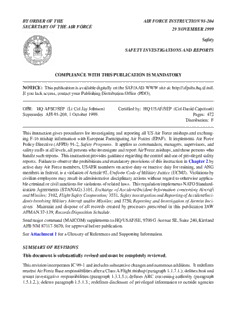
BY ORDER OF THE AIR FORCE INSTRUCTION 91-204 SECRETARY OF
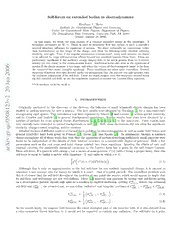
Self-forces on extended bodies in electrodynamics
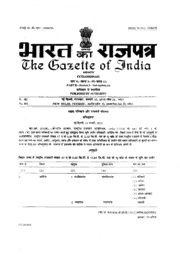
Union Government, Extraordinary, 2010-01-12, Part II-Section 3-Sub-Section(ii), Ref. S. O. 57(E)

Выступления полномочного представителя Президента РФ в Конституционном Суде Российской Федерации. 2015–2018 годы. Сборник. Том 2. 2017–2018 годы
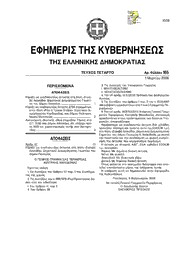
Greek Government Gazette: Part 4, 2006 no. 165
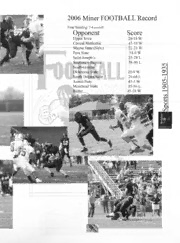
The Rollamo 2006
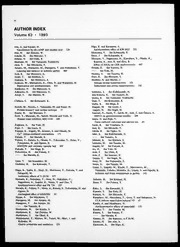
Japanese Journal of Pharmacology 1993: Vol 63 Index
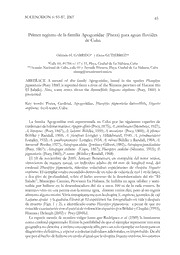
Primer registro de la familia Apogonidae (Pisces) para aguas fluviáles de Cuba
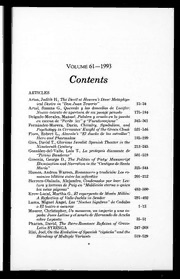
Hispanic Review 1993: Vol 61 Table of Contents

Roctober #43
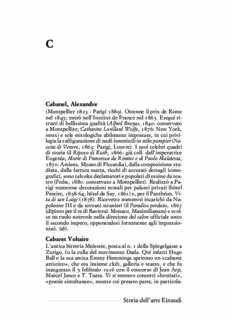
Cabanel, Alexandre Cabaret Voltaire Storia dell'arte Einaudi
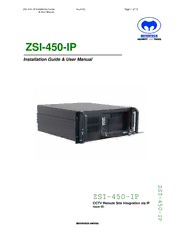
Meyertech ZSI-450-IP CCTV Remote Site Integration via IP User Manual (Issue 02)
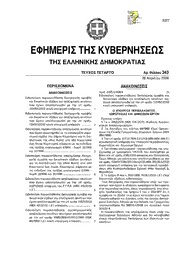
Greek Government Gazette: Part 4, 2006 no. 343
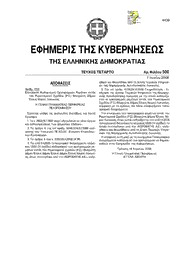
Greek Government Gazette: Part 4, 2006 no. 500
